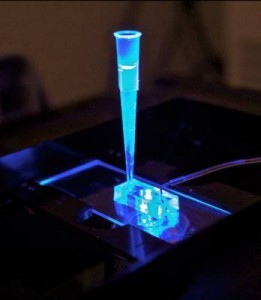Most drugs that are developed to target the heart are often tested on animal models. This method is not very efficient due to fundamental differences in the biology of humans and other living organisms such as the ion channels that conduct electrical impulses in the heart, which most of these drugs target. This limitation often delays the release of the drug and often incurs huge costs; however, the ‘heart-on-a-chip’ model developed by Professor Haley and his colleagues at UC Berkeley might just be the answer to this problem.

The heart-on-a-chip comprises of heart cells created from induced pluripotent stem cells that are arranged in a 3D geometry. Microfluidic channels on either side of the cellular area mimic blood vessels and can be used to deliver drugs the cell. This ensures that the cells are exposed to the nutrients and drugs in a way similar to that inside the body. The heart-on-a-chip was tested with four drugs and was able to replicate the effect of the drugs would have had on the heart inside the body, which was done by measuring the pulse rate of the cells.
The team is now planning to investigate whether this method of drug testing will work in multi-organ interactions. If this technology advances successfully it could possibly replace the use of animal models of drug testing in hopes of more reliable results.
Article: Medical News Today
Research Paper: Nature
Article summary courtesy by Waleed Khan
